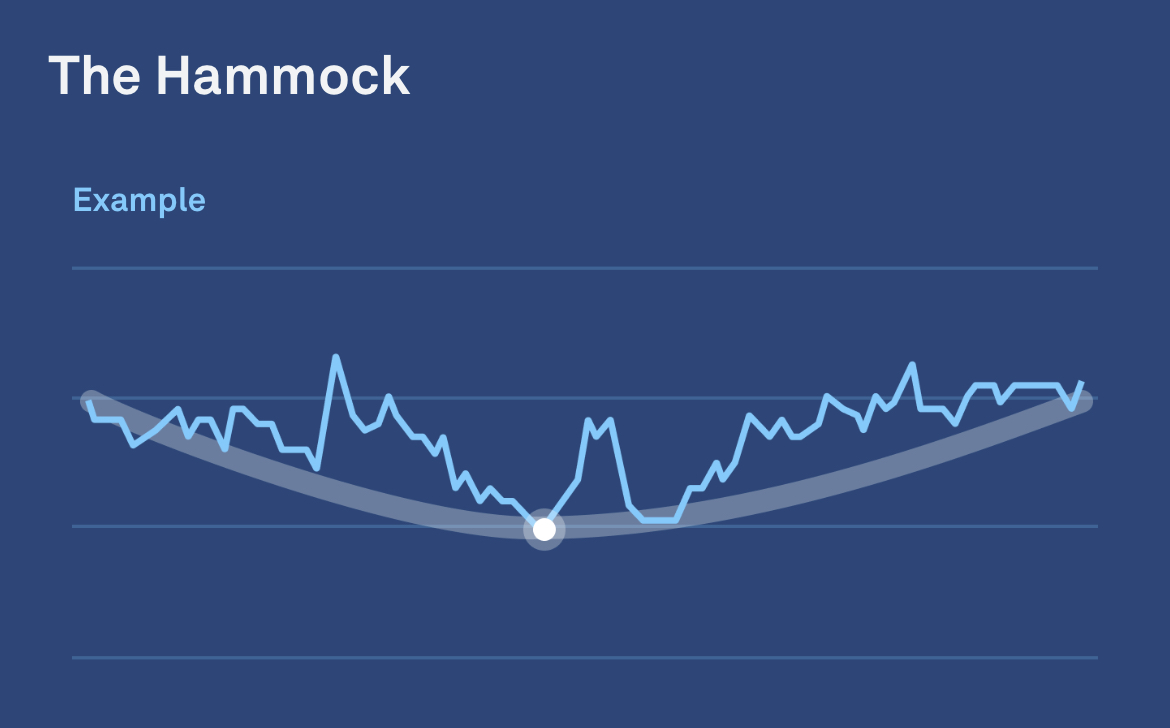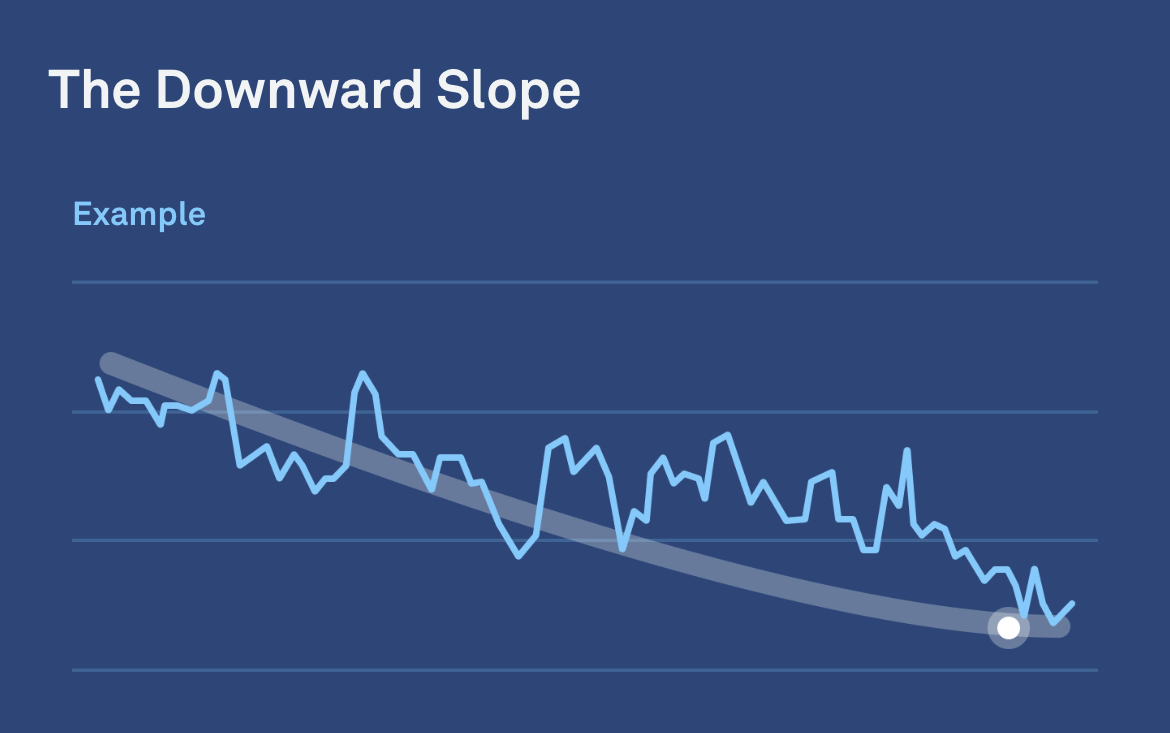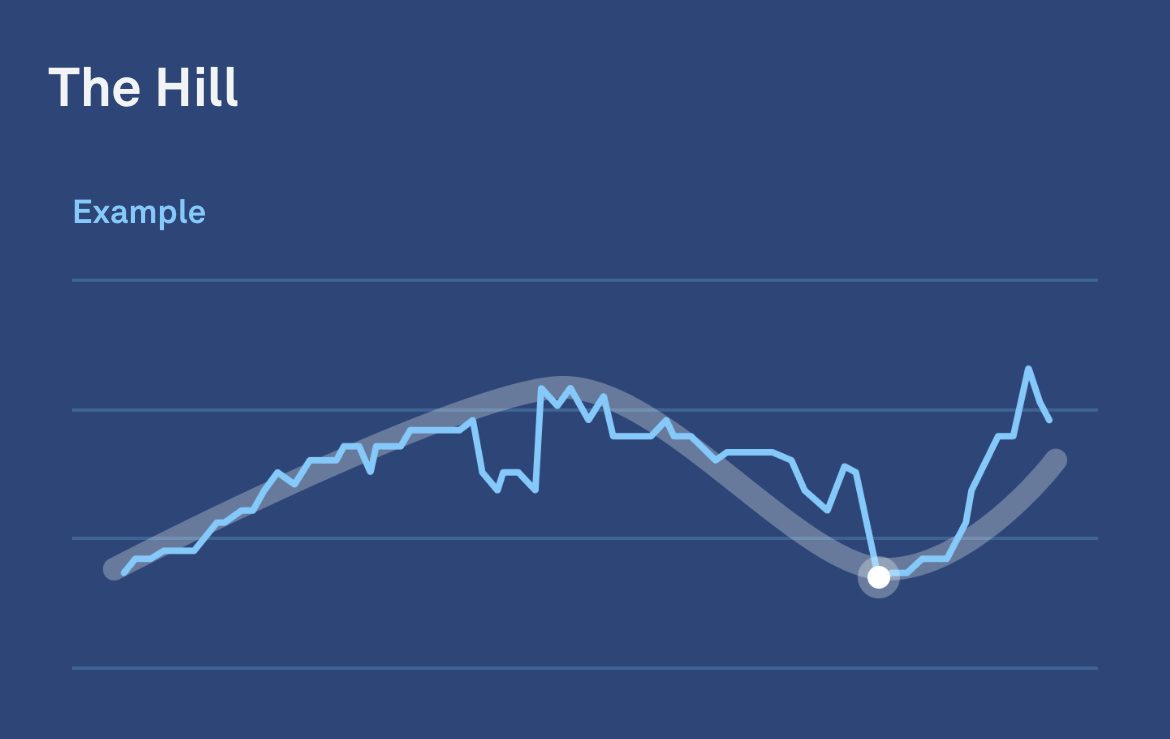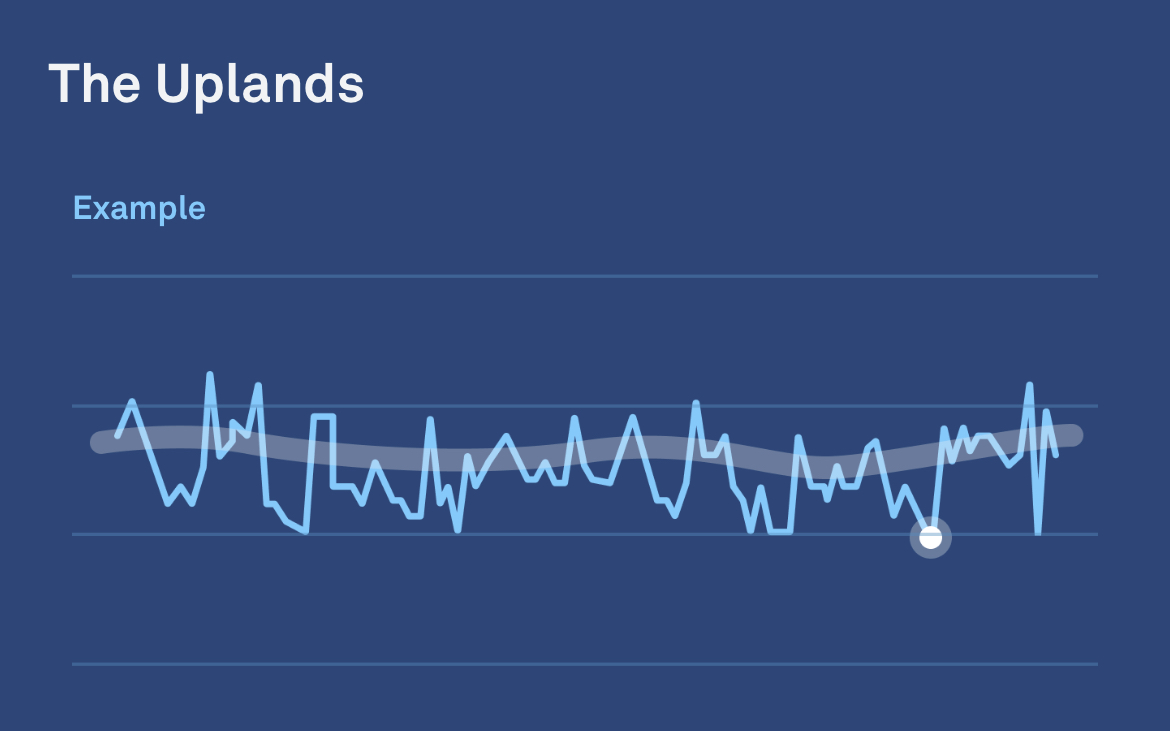Die Kurve deiner Herzfrequenz im Schlaf sagt eine Menge darüber aus, wie gesund dein Herz ist. Ein niedriger Ruhepuls (RP) ist ein Zeichen für gute Erholung und Gesundheit. Dies wirft eine häufige Frage auf: Wie hoch sollte deine Herzfrequenz im Schlaf sein?
Sieh dir deine Ruhepulskurve in der Oura-App an – vielleicht erkennst du darin die Auswirkungen von späten Mahlzeiten, abendlichen Workouts, Alkohol, Krankheit oder einem Alltag, der nicht im Einklang mit deinem zirkadianen Rhythmus steht?
| Tipp für Oura-Mitglieder: Gewinne weitere Einblicke in die allgemeine Gesundheit deines Herzens mit den neuen Oura-Features zur Herzgesundheit: Ausdauerleistungsfähigkeit und kardiovaskuläres Alter. |
Wie hoch ist deine Herzfrequenz im Schlaf?
Die durchschnittliche nächtliche Herzfrequenz variiert von Mensch zu Mensch stark. Eine normale Herzfrequenz kann zwischen 40 und 100 Schlägen pro Minute (S/Min.) liegen und immer noch als durchschnittlich angesehen werden – ein hilfreicher Anhaltspunkt, wenn du dich fragst, wie hoch deine Herzfrequenz im Schlaf sein sollte. Sie kann sich auch von Tag zu Tag ändern, je nach Flüssigkeitszufuhr, Höhenlage, körperlicher Aktivität und Körpertemperatur. Wie bei vielen anderen Signalen deines Körpers ist es am besten, deinen Ruhepuls mit deinem eigenen Basiswert zu vergleichen und Vergleiche mit anderen zu vermeiden.
Achte bei der Betrachtung deiner Ruhepulskurve besonders auf diese drei Dinge:
- Dein Trend: Steigt, fällt oder bleibt dein Ruhepuls während der Nacht gleich?
- Dein Tiefpunkt: Wann ist dein Ruhepuls am niedrigsten?
- Dein Ende: Ändert sich dein Ruhepuls kurz vor dem Aufwachen?
Mit diesen Fragen im Hinterkopf findest du hier vier Muster, die du in den nächtlichen Herzfrequenzkurven von Oura möglicherweise erkennen kannst.
MEHR ERFAHREN: Was ist der durchschnittliche Ruhepuls?
Vier Arten von Herzfrequenzmustern im Schlaf
Die Hängematte: Erholsame Nacht und frisches Aufwachen

Die Hängemattenkurve zeigt einen optimalen nächtlichen Verlauf der Herzfrequenz. Während der ersten Schlafphasen entspannt sich dein Körper, und dein Blutdruck und deine Herzfrequenz beginnen zu sinken.
In diesem Szenario erreichst du den niedrigsten Ruhepuls etwa am Mittelpunkt deines Schlafs, wenn die Menge des vorhandenen Melatonins einen Höhepunkt erreicht. Wenn du perfekt auf den Sonnenverlauf eingestellt sind, sinkt deine Körpertemperatur gegen 4 Uhr morgens auf den niedrigsten Wert.
Dein Ruhepuls kann während des REM-Schlafs kurzzeitig ansteigen. Das ist normal, diese vorübergehenden Ausschläge kannst du ignorieren, wenn du sehen möchtest, ob dein Schlaf nach der Hängemattenkurve verläuft.
Wenn du morgens aufwachst, steigt deine Herzfrequenz an. Die Hängemattenkurve ist ein Zeichen dafür, dass sich dein Körper in der Nacht entspannt hat und bereit ist, nach einem erholsamen Schlaf aufzustehen.
VERWANDTE THEMEN: REM-Schlaf: Was ist das und wie bekommt man mehr davon?
Der Abwärtstrend Dein Stoffwechsel macht Überstunden

Diese abwärts verlaufende Kurve ist ein Zeichen dafür, dass dein Stoffwechsel Überstunden macht. Hast du zu spät gegessen, zu spät trainiert oder dir vor dem Schlafengehen ein Glas Wein gegönnt? Wenn dein Ruhepuls zu Beginn hoch ist und kurz vor dem Aufwachen seinen niedrigsten Wert erreicht, startest du möglicherweise etwas schwach auf den Beinen in den Tag.
Wenn du diese Abwärtskurve regelmäßig beobachtest, könnte es ratsam sein, deine Abendroutine zu überdenken. Wenn du z. B. normalerweise spät abends trainierst, kann ein Training ein bis zwei Stunden früher zu positiven Veränderungen führen.
Morgens so früh wie möglich an die frische Luft zu gehen und das Sonnenlicht zu genießen, kann dir den Start in den Tag erleichtern.
Der Hügel: Zu erschöpft zum Schlafengehen

Wenn dein Ruhepuls unmittelbar nach dem Einschlafen ansteigt, könnte dies ein Zeichen für Erschöpfung sein. Bist du früh genug schlafen gegangen? Wenn du erst nach deiner üblichen Schlafenszeit ins Bett gehst, spürst du vielleicht schon die Auswirkungen des niedrigeren Blutdrucks und des Anstiegs von Melatonin, einem Hormon, das das Einschlafen unterstützt. Mit diesen Signalen meldet sich nämlich dein Körper, um dir verstehen zu geben, dass es Zeit zum Schlafen ist.
Wenn du zu deiner idealen Schlafenszeit ins Bett geschlüpft bist, kann es sein, dass deine Herzfrequenz zu Beginn der Nacht aus Gründen, auf die du keinen Einfluss hast, erhöht ist. Beispielsweise könnten sich deine Atemwege im Schlaf entspannen und du beginnst zu schnarchen, was deine Herzfrequenz in die Höhe treibt.
Versuche, deine Schlafenszeit anzupassen oder mögliche Ursachen für die Blockierung deiner Atemwege anzugehen, wenn sich deine Herzfrequenz im Schlaf häufig durch diese Art von Kurve auszeichnet.
MEHR ERFAHREN: Mouth Taping oder: Hilft ein zugeklebter Mund gegen Schnarchen?
Das Hochland: Etwas belastet dich

Wenn die Herzfrequenz im Schlaf ständig erhöht ist, kann das ein Zeichen dafür sein, dass eine Belastung deinen Körper von optimaler Erholung und qualitativem Schlaf abhält. Nach einer Nacht mit einem Herzfrequenzmuster dieser Art brauchst du vielleicht eine Pause. Aktiviere den Ruhemodus in der App, nimm dir Zeit für dich oder halte nachmittags ein Nickerchen.
MEHR ERFAHREN: 8 mögliche Ursachen für einen hohen Ruhepuls
Tipps für besseren Schlaf
Du denkst vielleicht, du schläfst, aber dein Körper ruht nie wirklich. Spüre in dich hinein, höre auf die Zeichen deines Körpers und sorge für optimalen Schlaf.
Die folgenden Tipps können dabei helfen, deine Schlafroutine zu verbessern:
- Versuche, jeden Tag zur gleichen Zeit aufzustehen. (Ja, sogar am Wochenende.) Diese Gewohnheit trägt auch zu konsistenten Mustern bei, die dir helfen, deine optimale Herzfrequenz für den Schlaf zu bestimmen.
- Plane deine Mahlzeiten mit Achtsamkeit. Spätes Essen kann dazu führen, dass dein Ruhepuls während der Nacht spät sinkt.
- Wenn dein Schlafmuster wie eine Hängematte aussieht, bist du an einem guten Ort. Überlege dir, was du am Vortag getan oder vermieden hast, und versuche, darauf aufzubauen.










